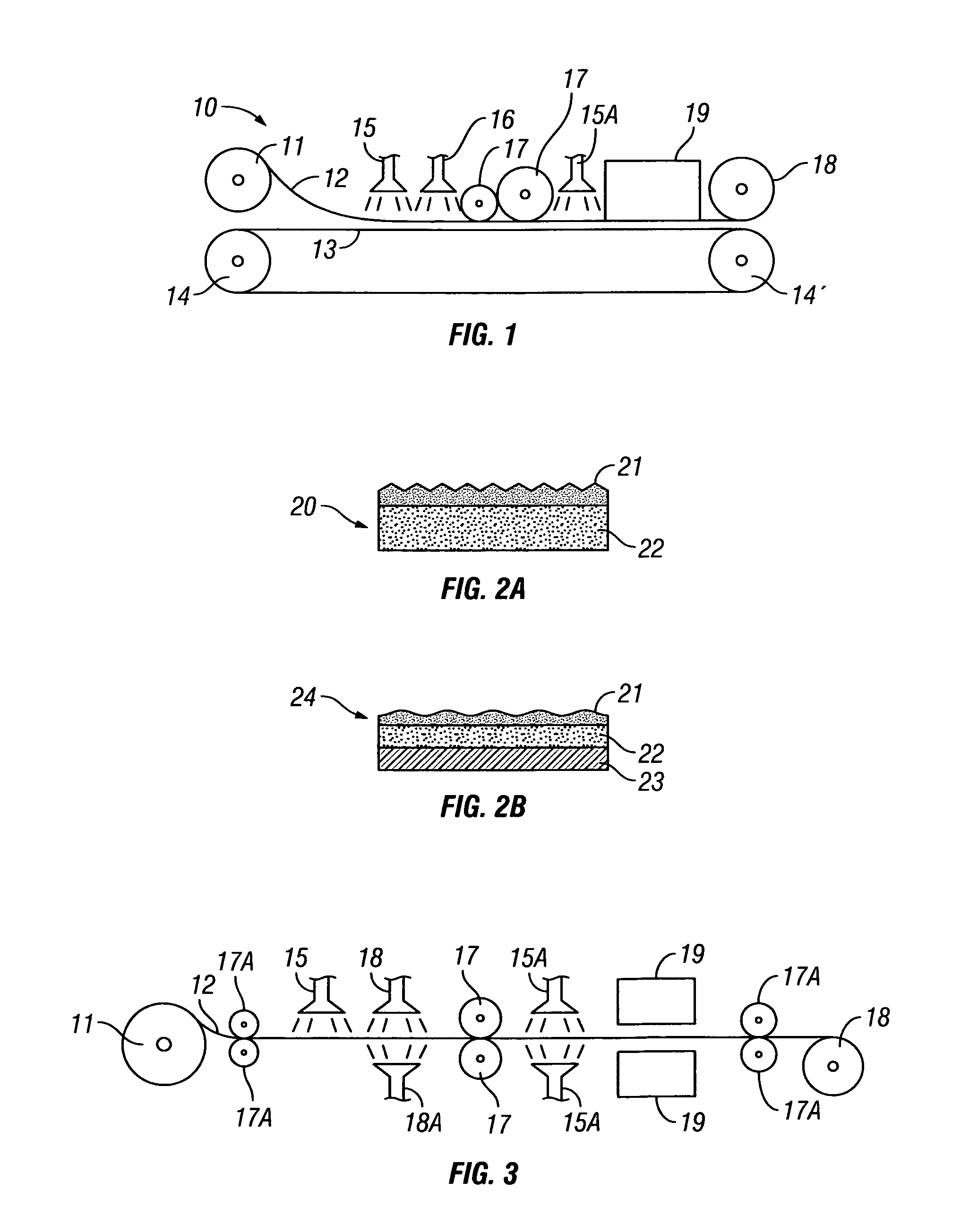Process for producing polyvinyl alcohol articles
a technology of polyvinyl alcohol and production process, which is applied in the direction of synthetic resin layered products, protective garments, textiles and paper products, etc., can solve the problems of high cost of manufacture and scorching during film production
- Summary
- Abstract
- Description
- Claims
- Application Information
AI Technical Summary
Benefits of technology
Problems solved by technology
Method used
Image
Examples
example 1
[0041]A non-woven polyvinyl alcohol fabric (20 mil thickness) was passed through a calendar as shown in FIG. 1 with the gap between the rolls set at 16 mils. The rolls were heated at 100° C. and a narrow slot of steam was directed at the fabric just before the fabric passed through the rolls. The treated fabric was reduced in thickness to 16 mil and the fabric surface transformed from a porous fibrous nature to almost continuous film surface on one side with substantially less porosity suitable for a use in disposable protective clothing or disposable medical articles.
example 2
[0042]A non-woven polyvinyl alcohol fabric (20 mil thickness) was passed through a calendar as shown in FIG. 1 with the gap between the rolls set at 14 mils. The rolls were heated at 90° C. and a narrow slot of steam was directed at the top surface of the fabric just before the fabric passed through the rolls. A fine mist of water repellent coating was sprayed on the fabric after the fabric emerged from the calendar. The treated fabric was then passed through a drying oven to fix the water repellent coating on the surface of the fabric. The treated fabric was reduced in thickness to 14 mil and the fabric surface transformed from a porous fibrous nature to a continuous film surface with substantially less porosity suitable for a use in disposable protective clothing. Drops of water beaded and rolled off the surface of the fabric.
example 3
[0043]A laminate of polyvinyl alcohol and polyethylene (20 mil thickness) was passed under a steam jet with steam of 100-120° C. impinging on the polyvinyl surface onto a conveyor as shown in FIG. 1. The conveyor transported the laminate through heated calendar rolls (100° C.) which was then sprayed with fluorocarbon water repellent agent and then passed through a drying oven. The laminate could be used in replacement of TYVEK®.
PUM
| Property | Measurement | Unit |
|---|---|---|
| temperature | aaaaa | aaaaa |
| temperature | aaaaa | aaaaa |
| lengths | aaaaa | aaaaa |
Abstract
Description
Claims
Application Information
 Login to View More
Login to View More - R&D
- Intellectual Property
- Life Sciences
- Materials
- Tech Scout
- Unparalleled Data Quality
- Higher Quality Content
- 60% Fewer Hallucinations
Browse by: Latest US Patents, China's latest patents, Technical Efficacy Thesaurus, Application Domain, Technology Topic, Popular Technical Reports.
© 2025 PatSnap. All rights reserved.Legal|Privacy policy|Modern Slavery Act Transparency Statement|Sitemap|About US| Contact US: help@patsnap.com


